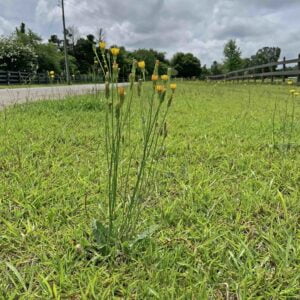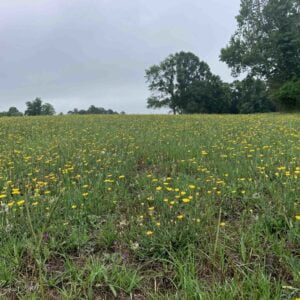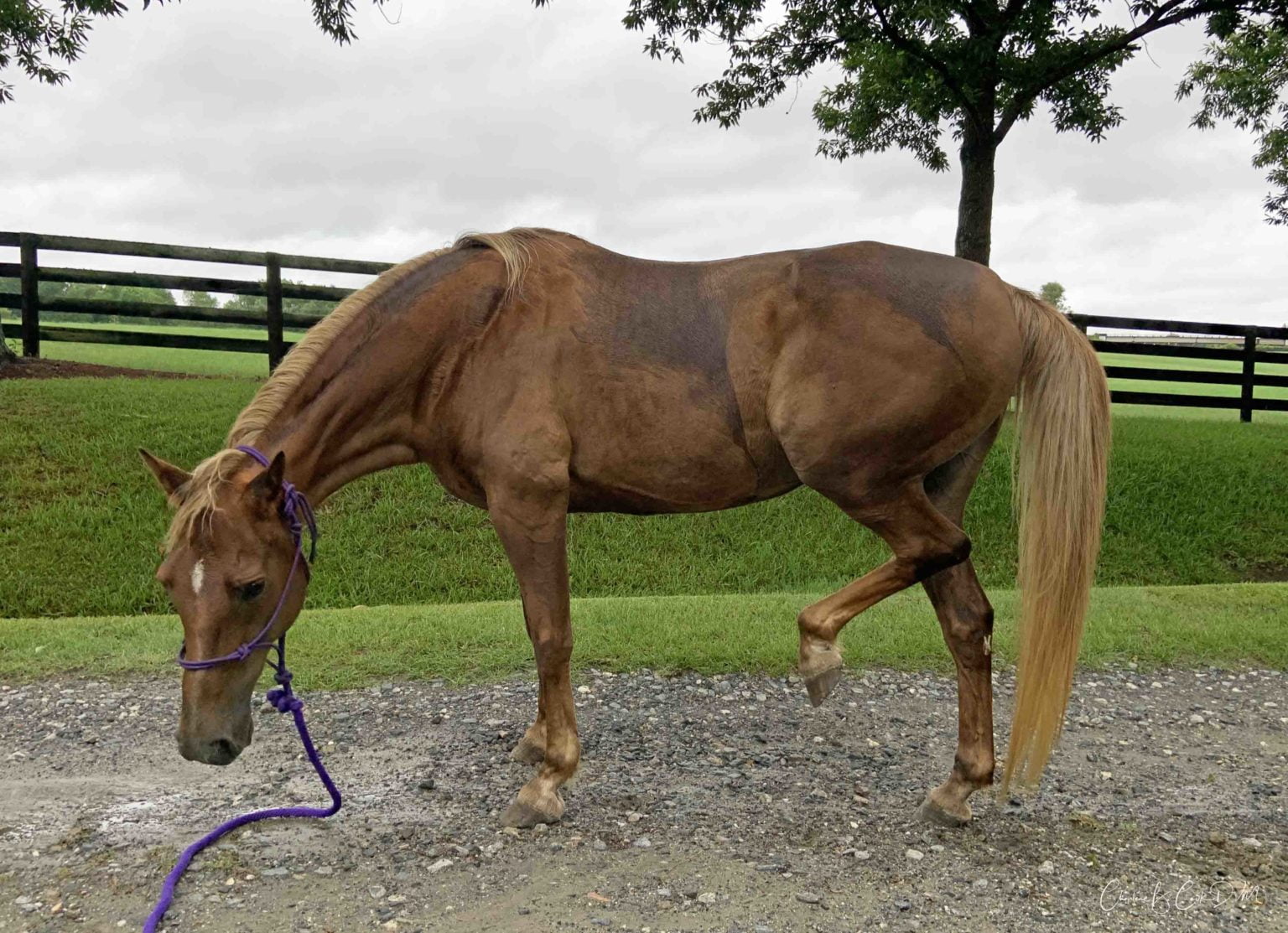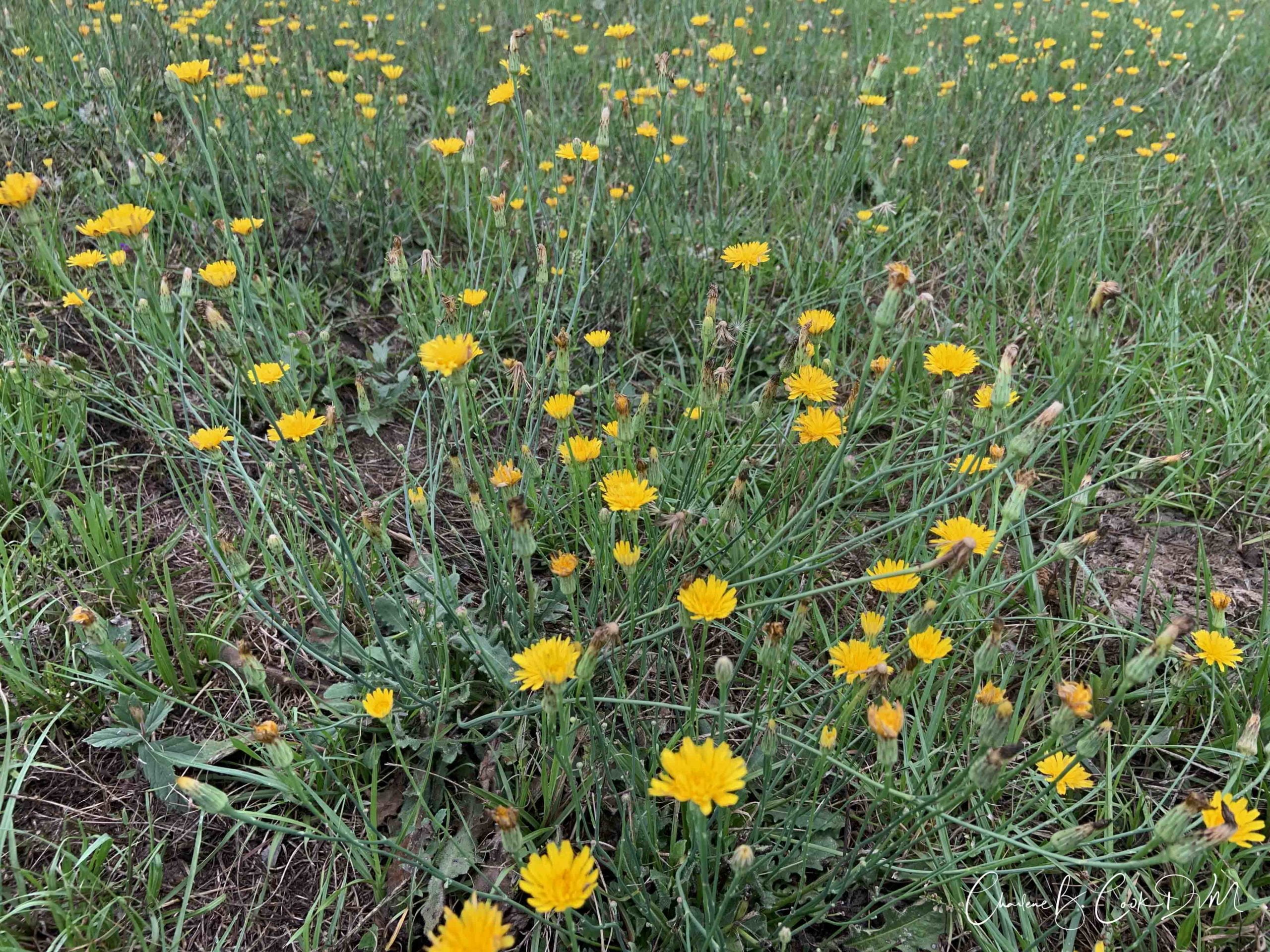The troublemaker is a weed known as Hypochaeris radicata, commonly known as “False Dandelion”.
This weed looks like a dandelion but look closer and you will see several differences. The leaves at the base of the plant look just like a dandelion. The flower is bright yellow but the petals form a small cup about 1” or less in diameter. A normal dandelion has a big yellows flower like a Mum. False Dandelion grows on long spindle-like stalks. Unlike the dandelion, False Dandelion has multiple branching flowers stems up to 18-24 inches in height, each with a single, yellow, dandelion-like flower. Seeds are tipped with a circle of bristles that aid in wind distribution and looks just like a normal dandelion.


False Dandelion was native to Europe and has a long history of causing problems in Australia and New Zealand as the cause of a syndrome called “Australian Stringhalt”. Not to be confused with ordinary Stringhalt which is a tendon injury. Unfortunately False Dandelion is now present in many areas of North America and has recently become a problem in Central Georgia.
Horses love dandelions and will readily eat them. A normal dandelion will not hurt a horse. False Dandelion is another matter. False Dandelion causes nerve damage in the hind legs of the horse. The horse develops an abnormal gait pulling their hind legs up to the belly. They can be so severe that they will fall.

Treatment involves removing the affected horse from the False Dandelion and generally results in the animal’s recovery over a period of days to months. Treatment with phenytoin and thiamine have been reported to have some beneficial results. Severely affected horse require stabling until they can recover.
I am seeing these plants all over middle Georgia as I make farm calls. This weed is an invasive species. It produces tremendous numbers of seeds and spread quickly through pastures. Mowing is not adequate to control this weed. Fortunately many herbicides will control this weed.
Charlene B. Cook DVM

